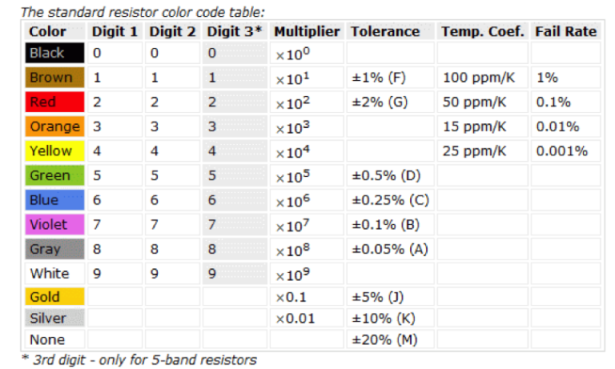When I was working on the next version of Common Parts Library, I realized that it would be helpful to explain why you might pick one type of passive component over another. We started off by writing “How to Select a Capacitor” last month, and are following it up with a close look at resistors this month.
In this blog, we will explain all the different types of resistors, their merits and demerits, and popular applications. We have included some recommendations for commonly used resistor series with high supply chain availability from the Common Parts Library and Seeed Studio’s Open Parts Library, and have linked to pre-created search on Octopart.
Let’s dive into the world of resistors:
Resistors
Resistors are two-terminal components used for limiting current, voltage division, and timing applications. Resistors complement ‘active’ components like op-amps, micro-controllers, or integrated circuits for variety of operations like biasing, filtering, and pulling up I/O lines. Variable resistors can be used to change the properties of a circuit. Current sensing resistors are used to measure the current in a circuit. The unit of resistance is Ohms (Ω).
TYPES
There are several different types of resistors which differ by power rating, size, performance, and cost. Below are some of the common resistor types: chip SMD resistors, through-hole resistors, wirewound resistors, current sense resistors, thermistors, and potentiometers. We’ve also included their characteristics, applications, package information as well as info on part selection.
I. Chip SMD Resistors
Chip surface-mount resistors provide a size advantage over through-hole resistors, so they are great for printed circuit boards (PCBs). Some of their common applications are pull-up/pull-down operations to ensure a signal is at valid logic level when external devices are removed, voltage divisions, current limiting, and filtering signals at certain frequencies in high-pass/low-pass/band-pass filters. You can use 0Ω resistors as jumpers to disable a sub-section of a circuit.
There are two kinds of Chip SMD Resistors:
1. Thin Film resistors are used in high precision applications like audio, medical, or test equipment. They have lower variation (0.1%-2%), a lower temperature coefficient (5 ppm/K), and are less noisy compared to thick film resistors. However, they are more expensive.
2. Thick Film resistors are the most common type of resistor, and are used for most applications. They have higher variation (1%-5%), a higher temperature coefficient (50 ppm/K), and are noisier than thin film resistors. If there are no specific performance requirements, thick film resistors are usually the preferred choice.
Package: 0201, 0402, 0603, 0805, and 1206 packages are the most common. The numbers represent the dimensions in the imperial system, with 0402 being 0.04 X 0.02 inches and 0603 being 0.06 X 0.03 inches and so on.
For more detail: How to Select a Resistor

